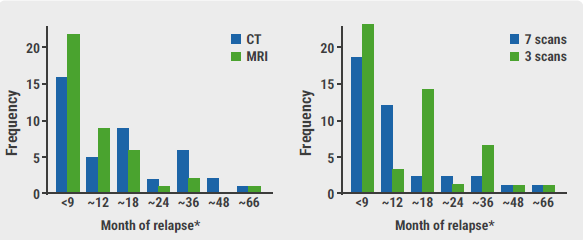In a randomized trial that included nearly 600 adult female patients with urinary incontinence, researchers saw no benefit at the end of 24 months from adding electromyographic biofeedback to pelvic floor muscle training (PFMT), according to the results published in The BMJ.
"In this large multicentre trial with long term follow-up of electromyographic biofeedback as an adjunct to PFMT, we found no evidence of benefit from routinely adding biofeedback to PFMT," the researchers led by Suzanne Hagen of the nursing, midwifery and allied health professions research unit at Glasgow Caledonia University write. "Overall, the trial findings are consistent with national guidelines and confirm the recommendation that electromyographic biofeedback should not be routinely offered as part of PFMT."
The authors did not respond to a request for comments.
To determine if electromyographic biofeedback would improve the results of PFMT, Hagen and her colleagues recruited 687 female patients newly presenting with stress or mixed urinary incontinence from 23 centers that provided incontinence care in the UK. Ultimately, 600 women were randomly assigned 1:1 to receive either PFMT alone or PFMT with electromyographic biofeedback. Seven women dropped out of the study leaving 295 in the PFMT biofeedback group and 298 in the PFMT alone group.
Women were excluded from participating in the study for a number of reasons, including having urgency urinary incontinence alone, a prolapse greater than stage II on examination (>1cm below the hymen on straining), or being unable to contract pelvic floor muscles on digital examination when requested.
All the women in the study were offered six face-to-face appointments (weeks 0, 1, 3, 6, 10, and 15). They were given a session lasting 60 minutes for the first appointment and 30 minutes for subsequent appointments with a therapist (an experienced physiotherapist, nurse, or other continence clinician) who had received training in delivery of the intervention.
Electromyographic biofeedback makes use of a vaginal probe to capture the electrical activity of the pelvic floor muscles, which is displayed on a screen, the researchers explain. When it is used in tandem with PFMT, biofeedback may help women more easily learn the correct contraction technique.
The therapists assessed each woman's pelvic floor muscles, taught the correct technique for exercise, and prescribed an individualized PFMT program, which would include three sets of exercises daily, to be followed at home. The participants were asked to record their experiences in an exercise diary.
At the end of 24 months, the researchers assessed the effectiveness of the therapy using the International Consultation on Incontinence Questionnaire-urinary incontinence short form (ICIQ-UI SF). Hagen and her colleagues found no statistically significant difference in ICIQ-UI SF score between the two groups at six months, 12 months, or 24 months.
There also was no significant difference between the group that got biofeedback PFMT and the one that received PFMT alone at 24 months when it came to the percentage cured (7.9% versus 8.4%) and the percentage that improved 60% versus 62.6%).
"I commend authors on a fantastic attempt to answer this question using the gold standard of a randomized, multicenter trial," said Dr. Carolyn Swenson, an assistant professor at University of Michigan and a specialist in female pelvic medicine and reconstructive surgery. "And I think they do fairly good job accomplishing their goal of determining whether biofeedback adds anything to pelvic floor muscle training."
Still, Dr. Swenson said, the study has some limitations, not the least of which is excluding women with urgency incontinence. "I'm not sure why they excluded women with urgency incontinence," Dr. Swenson said. "They also excluded those who couldn't perform pelvic muscle contractions. It's possible that cohort would benefit the most from something like biofeedback."
By Linda Carroll
SOURCE: https://bit.ly/2T5JCzY The BMJ, online October 14, 2020.
Posted on
Previous Article
« Image-guided biopsy may help some avoid breast-cancer surgery Next Article
Linked color imaging bests conventional imaging for upper GI cancer detection »
« Image-guided biopsy may help some avoid breast-cancer surgery Next Article
Linked color imaging bests conventional imaging for upper GI cancer detection »
© 2024 Medicom Medical Publishers. All rights reserved. Terms and Conditions | Privacy Policy
HEAD OFFICE
Laarderhoogtweg 25
1101 EB Amsterdam
The Netherlands
T: +31 85 4012 560
E: publishers@medicom-publishers.com


